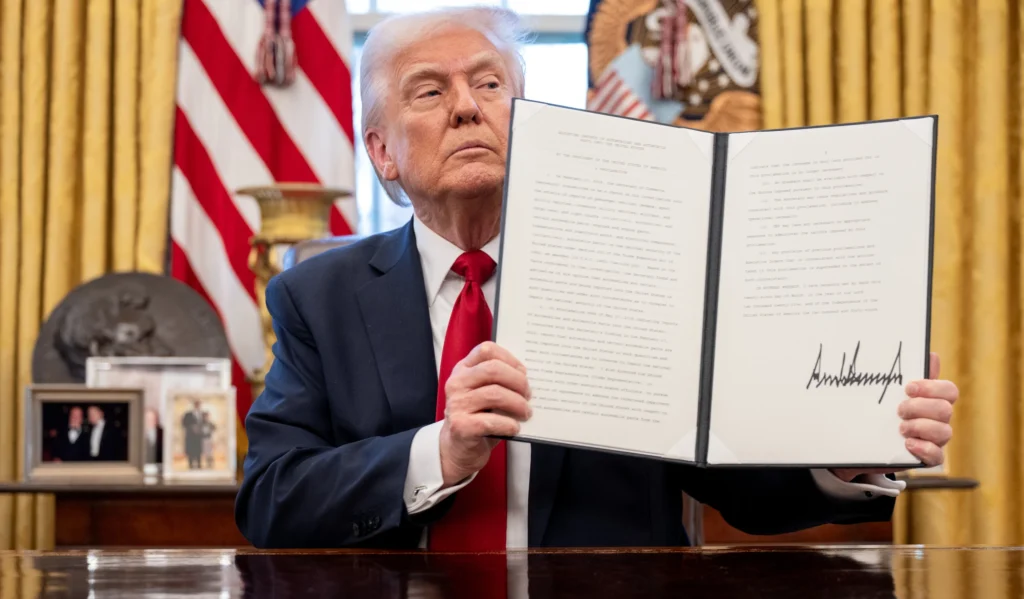U.S. President Donald Trump has signed two major executive orders reintroducing “reciprocal tariffs” on imports from 69 countries, with rates ranging from 10% to 41%, signaling a renewed protectionist push ahead of the upcoming U.S. election season.
The tariffs, part of a sweeping trade strategy, target U.S. trading partners based on trade imbalances and recent negotiations. Countries like Australia and the United Kingdom will now face a 10% base tariff, while others, including India (25%), Taiwan (20%), and Pakistan (19%), are subject to higher levies. Notably, Switzerland’s rate jumped to 39%, while Syria and Myanmar are now subject to the highest rates at 41% and 40%, respectively.
In a separate move, the White House announced a significant increase in tariffs on Canadian goods, raising the rate from 25% to 35%, accusing Ottawa of failing to stem the influx of fentanyl and other illicit drugs into the U.S.
A Trade Shake-Up with Global Impact
The executive order, titled “Further Modifying the Reciprocal Tariff Rates”, cites the “continued lack of reciprocity in bilateral trade relationships” as justification for the move. Trump invoked a national emergency declared in Executive Order 14257 to support the new measures.
While most tariffs will take effect on August 7, those targeting Canada are effective August 1. The delay gives U.S. Customs and Border Protection time to adjust to the new trade rules.
Uncertainty and Unequal Calculations
Trade policy analysts have expressed confusion over the methodology behind the tariff adjustments. Deborah Elms, from the Hinrich Foundation, criticized the erratic nature of the updated rates, stating, “The original formula was nonsense, but at least it had logic. These rates do not appear to fit known facts.”
Inu Manak, a trade expert at the Council on Foreign Relations, noted that the seven-day grace period before enforcement allows countries to negotiate exemptions or revised terms.
Complex Formulas and Strategic Flexibility
Countries with which the U.S. holds a trade deficit have seen the sharpest increases. The White House has already struck revised deals with the EU, Japan, South Korea, Vietnam, the UK, and others, exempting them from the harshest penalties. Still, tariff volatility remains, with some countries benefiting unexpectedly while others, such as India and Switzerland, faced steep increases.
According to Steve Okun, CEO of APAC Advisors, “There is no overarching theory. Each country gets its own rate depending on the president’s perception, whether strategic, political, or personal.”
Canada, China, and Mexico: Key Targets and Exemptions
Canada drew particular attention in the new orders, while China and Mexico were absent from the list, despite Trump’s previous criticisms. However, China could face a 30% tariff on most goods if a trade agreement isn’t finalized by August 12, according to administration insiders.
Mexico, on the other hand, secured a 90-day extension following recent talks with the Biden and Trump teams. Meanwhile, the administration plans to unveil new “rules of origin” for transshipped goods, which could further reshape global supply chains.

